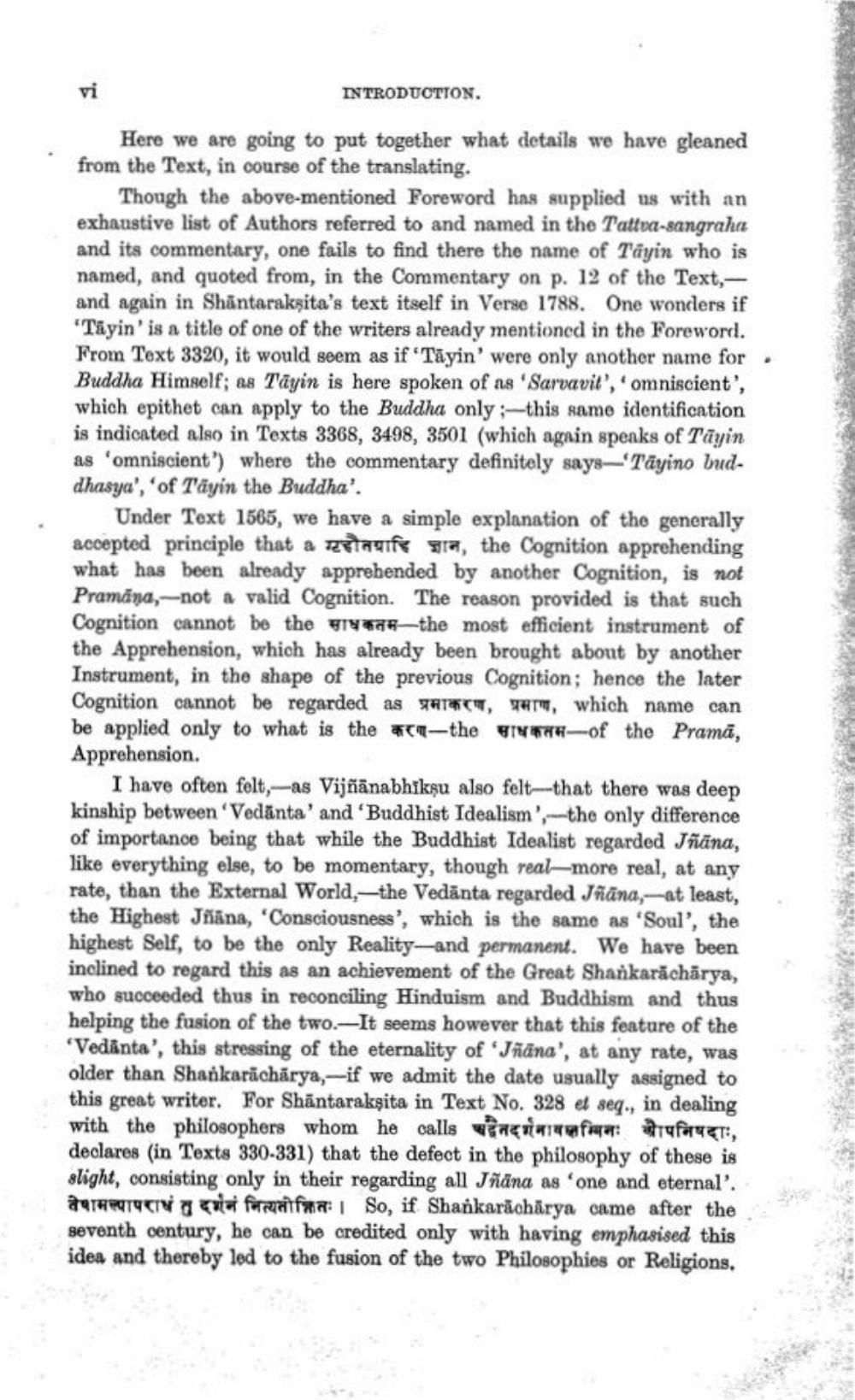Book Title: Tattva Sangraha Vol 2 Author(s): Kamlashila, Ganganatha Jha Publisher: Oriental Research Institute Vadodra View full book textPage 9
________________ INTRODUOTTON. Here we are going to put together what details we have gleaned from the Text, in course of the translating. Though the above-mentioned Foreword has supplied us with an exhaustive list of Authors referred to and named in the Tattva-sangraha and its commentary, one fails to find there the name of Täyin who is named, and quoted from, in the Commentary on p. 12 of the Text, and again in Shantarakṣita's text itself in Verse 1788. One wonders if "Tāyin' is a title of one of the writers already mentioned in the Foreword. From Text 3320, it would seem as if 'Tāyin' were only another name for Buddha Himself; as Tāyin is here spoken of as 'Sarvavit', 'omniscient', which epithet can apply to the Buddha only :--this same identification is indicated also in Texts 3368, 3498, 3501 (which again speaks of Tāyin as 'omniscient') where the commentary definitely says-Täyino Uniddhasya', 'of Täyin the Buddha'. Under Text 1565, we have a simple explanation of the generally accepted principle that a 2019 yia, the Cognition apprehending what has been already apprehended by another Cognition, is not Pramäng, not a valid Cognition. The reason provided is that such Cognition cannot be the r—the most efficient instrument of the Apprehension, which has already been brought abont by another Instrument, in the shape of the previous Cognition; hence the later Cognition cannot be regarded as TV, WT, which nan be applied only to what is the the y -of the Pramd Apprehension. I have often felt,-as Vijñānabhikṣu also felt that there was deep kinship between 'Vedānta' and 'Buddhist Idealism' the only difference of importance being that while the Buddhist Idealist regarded Jñäna, like everything else, to be momentary, though real-more real, at any rate, than the External World,--the Vedānta regarded Jhāna, at least, the Highest Jñana, 'Consciousness', which is the same as 'Soul', the highest Self, to be the only Reality-and permanent. We have been inclined to regard this as an achievement of the Great Shankarãehārya, who succeeded thus in reconciling Hinduism and Buddhism and thus helping the fusion of the two.-It seems however that this feature of the 'Vedanta', this stressing of the eternality of Jñana', at any rate, was older than Shankaracharya,--if we admit the date usually assigned to this great writer. For Shāntarakṣita in Text No. 328 et seq., in dealing with the philosophers whom he calls vencarrefour defauti, declares (in Texts 330-331) that the defect in the philosophy of these is slight, consisting only in their regarding all Jhäna as one and eternal'. H IV a qui furrait So, if Shankarāohārya came after the seventh century, he can be credited only with having emphasised this idea and thereby led to the fusion of the two Philosophies or Religions,Page Navigation
1 ... 7 8 9 10 11 12 13 14 15 16 17 18 19 20 21 22 23 24 25 26 27 28 29 30 31 32 33 34 35 36 37 38 39 40 41 42 43 44 45 46 47 48 49 50 51 52 53 54 55 56 57 58 59 60 61 62 63 64 65 66 67 68 69 70 71 72 73 74 75 76 77 78 79 80 81 82 83 84 85 86 87 88 89 90 91 92 ... 887
